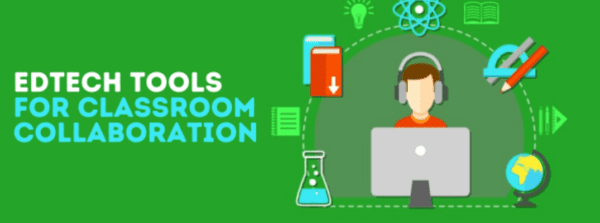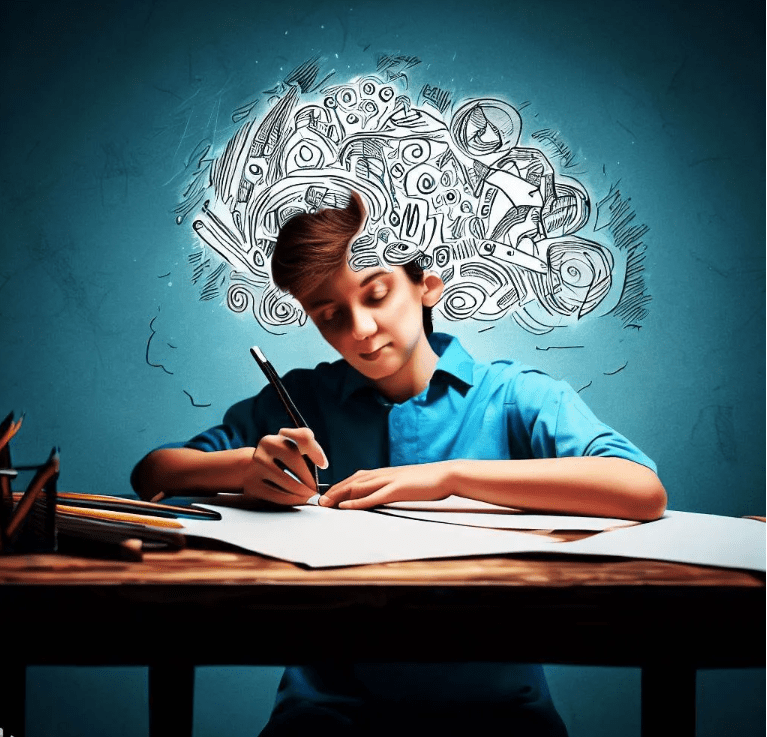Table of Contents
Mental health is a growing concern among students, and the COVID-19 pandemic has only exacerbated this issue. However, with the rise of EdTech, there is an opportunity to address this problem. EdTech can potentially improve student mental health by providing access to resources and support and creating a more supportive and effective learning environment.
One way EdTech can impact student mental health is by providing digital mental health platforms. These platforms offer a “side door” to mental health resources, providing students access to campus services and resources they can use independently. According to a recent article in EdTech Magazine, custom platforms can improve student well-being by providing access to mental health resources and support.
Educators and administrators need to recognize EdTech’s impact on student mental health. We can create a more supportive and effective learning environment that promotes student well-being by leveraging technology. However, it is also essential to recognize the challenges and opportunities of implementing EdTech in higher education.

Key Takeaways
- EdTech can improve student mental health by providing access to resources and support.
- Digital mental health platforms can offer a “side door” to mental health resources, providing students access to campus services and resources that they can use independently.
- Educators and administrators must recognize EdTech’s impact on student mental health and work to create a more supportive and effective learning environment.
The Impact of EdTech on Student Mental Health
As a student, you may face various mental health challenges, such as anxiety, depression, and stress. It is crucial to have access to the right tools and support to manage your mental health and well-being. EdTech has emerged as a powerful tool to support students’ mental health needs.
Understanding Student Mental Health Challenges
Before diving into the impact of EdTech on student mental health, it is essential to understand the challenges that students face. According to a study published in the Journal of American College Health, over 60% of college students experience overwhelming anxiety, while 40% suffer from depression. These numbers highlight the need for adequate mental health support for students.
EdTech Tools for Mental Health Support
EdTech tools can provide students various mental health support, such as online counselling services, mental health assessment apps, and virtual support groups. These tools can help students access support and resources from anywhere, anytime, making managing their mental health needs easier.
For example, the article “Ed Tech Is Critical to Addressing the Student Mental Health Crisis” highlights how districts can use technology to help meet student needs. The article suggests that districts can use technology to provide students access to mental health resources, such as online counselling services, mental health assessment apps, and virtual support groups.

The Role of Technology in SEL and Well-Being
EdTech can also significantly support social-emotional learning (SEL) and well-being. SEL is how students acquire and apply the knowledge, skills, and attitudes necessary to understand and manage emotions, set and achieve positive goals, feel and show empathy for others, establish and maintain positive relationships, and make responsible decisions.
According to an article published in “Acer for Education, ” technology can help support SEL by providing students with access to online resources such as videos, interactive games, and online courses. These resources can help students develop the skills and knowledge necessary to manage their emotions, build positive relationships, and make responsible decisions.
In conclusion, EdTech has emerged as a powerful tool to support students’ mental health needs. By providing access to online counselling services, mental health assessment apps, virtual support groups, and SEL resources, EdTech can help students manage their mental health and well-being.
EdTech Responses to the COVID-19 Pandemic
The COVID-19 pandemic has impacted education worldwide, forcing schools to close and students to stay at home. Educational technology (EdTech) has become essential for students, teachers, and parents to adapt to the new normal. Here are some of the ways EdTech has responded to the pandemic.

Online Learning Platforms and Student Engagement
Online learning platforms have become the backbone of remote learning during the pandemic. These platforms have enabled teachers to deliver lessons, assignments, and assessments to students while they are at home. They also provide interactive features such as chat rooms, discussion forums, and video conferencing to facilitate student engagement and collaboration.
One example of an online learning platform that has gained popularity during the pandemic is Google Classroom. Google Classroom is a free web service developed by Google for schools that aims to simplify creating, distributing, and grading assignments in a paperless way. It has become an essential tool for teachers to deliver remote learning and keep students engaged.
Virtual Counseling and Accessibility
The pandemic has also affected students’ mental health, and virtual counselling has become an essential tool for schools to provide support to students. Counselling services enable students to access mental health services remotely, which is especially important during the pandemic when in-person counselling is not always possible.
In addition, EdTech has also responded to the pandemic by making educational resources more accessible to students with disabilities. For example, tools such as screen readers and closed captioning have become more widely available, making it easier for students with visual or hearing impairments to access online learning materials.
Overall, EdTech has played a critical role in responding to the challenges posed by the pandemic. Online learning platforms and virtual counselling services have enabled schools to continue providing education and support to students, while accessibility features have made learning more inclusive for students with disabilities.

Strategies for Educators and Administrators
As an educator or administrator, there are several strategies you can implement to support the mental health of your students and staff. Here are some key strategies to consider:
Incorporating Mental Health Resources in Curriculum
One way to support mental health in schools is to incorporate mental health resources into the curriculum. This can include teaching students mental health, stress management, and coping skills. For example, you can incorporate mindfulness exercises into your classroom routine or teach students about the importance of self-care. By integrating mental health resources into the curriculum, you can help reduce the stigma surrounding mental health and provide students with the tools they need to manage their mental health.
Training and Support for Educators
Educators and staff also need mental health support. Training and support can help them recognize the signs of mental health issues in students and provide appropriate support. This can include training on how to identify and respond to mental health crises and how to support students who may be struggling with mental health issues. Additionally, providing educators access to mental health resources and counselling services can help reduce burnout and improve overall well-being.

Policy and Infrastructure for Mental Health in Schools
Finally, it’s essential to have policies and infrastructure to support mental health in schools. This can include policies around mental health education and those supporting mental health services and resources for students and staff. For example, schools can provide access to mental health counselling services or school-issued devices with mental health resources. By having policies and infrastructure in place, schools can ensure that mental health is a priority and that students and staff have access to the resources they need to maintain their mental health.
Overall, there are many strategies that educators and administrators can implement to support mental health in schools. By incorporating mental health resources into the curriculum, providing training and support for educators, and having policies and infrastructure in place to support mental health, schools can help create a safe and supportive environment for all students and staff.
Challenges and Opportunities in Higher Education
As the demand for mental health services on college campuses continues to rise, higher education institutions face many challenges in meeting their students’ needs. EdTech companies have an opportunity to partner with these institutions and offer innovative solutions to help address these challenges.

Addressing the Mental Health Needs of College Students
College students face a variety of mental health challenges, including stress, anxiety, and depression. According to a study published in the Journal of American College Health, over 60% of college students reported feeling overwhelming anxiety in the past year [1]. These challenges can significantly impact students’ academic performance and overall well-being.
Higher education institutions are working to address these challenges by increasing the availability of mental health services on campus. This includes hiring more counsellors and therapists, offering group therapy sessions, and providing student resources to manage stress and anxiety. However, many institutions still struggle to meet the demand for these services, and students may face long wait times to access care.
EdTech Companies and Higher Education Partnerships
EdTech companies have an opportunity to partner with higher education institutions to offer innovative solutions that can help address the mental health needs of college students. For example, some companies are developing mobile apps that give students access to mental health resources and support [2]. These apps can help students manage stress and anxiety, connect with counsellors and therapists, and track their mental health over time.
Other companies are using artificial intelligence (AI) and machine learning (ML) to identify students who may be at risk for mental health issues and provide targeted interventions [3]. These tools can help institutions identify students who may need additional support and provide them with the resources they need to stay healthy and succeed academically.
Overall, while there are certainly challenges in meeting college students’ mental health needs, there are opportunities for higher education institutions and EdTech companies to collaborate on developing innovative solutions that can improve students’ well-being and support their academic success.
[1] https://www.ncbi.nlm.nih.gov/pmc/articles/PMC6476258/ [2] https://edtechmagazine.com/higher/article/2022/07/digital-mental-health-platforms-can-improve-student-well-being [3] https://www.edsurge.com/news/2019-07-29-ai-s-role-in-mental-health-care-on-campusFuture Trends and Innovations in EdTech
As technology evolves, the EdTech industry is poised to make significant strides in improving student well-being and mental health. Here are some of the most promising trends and innovations to look out for:

Predictive Analytics and Student Well-Being
Predictive analytics is a powerful tool that can help identify students who may be struggling with mental health issues before they become serious. By analyzing data such as attendance rates, grades, and social media activity, predictive analytics algorithms can identify patterns that may indicate a student is at risk for mental health problems. This information can then be used to provide targeted interventions and support.
In addition to identifying at-risk students, predictive analytics can also be used to improve overall student well-being. For example, some schools are using predictive analytics to identify students who may benefit from additional academic support or who may be struggling with issues such as stress or anxiety. Schools can help students stay on track and achieve their full potential by providing targeted resources and support.
Advancements in EdTech for Mental Health
EdTech companies are developing various apps and tools to help students manage their mental health. Some apps use cognitive-behavioral therapy techniques to help students identify and challenge negative thought patterns. In contrast, others provide guided meditation and relaxation exercises to help students reduce stress and anxiety.
In addition to these individual tools, some schools implement comprehensive mental health programs incorporating various EdTech tools and resources. These programs may include online counselling services, peer support groups, and mental health education modules.
Overall, the future of EdTech looks bright regarding improving student well-being and mental health. With the help of predictive analytics, targeted interventions, and a wide range of innovative tools and resources, schools are better equipped than ever to support students in achieving their academic and personal goals.







